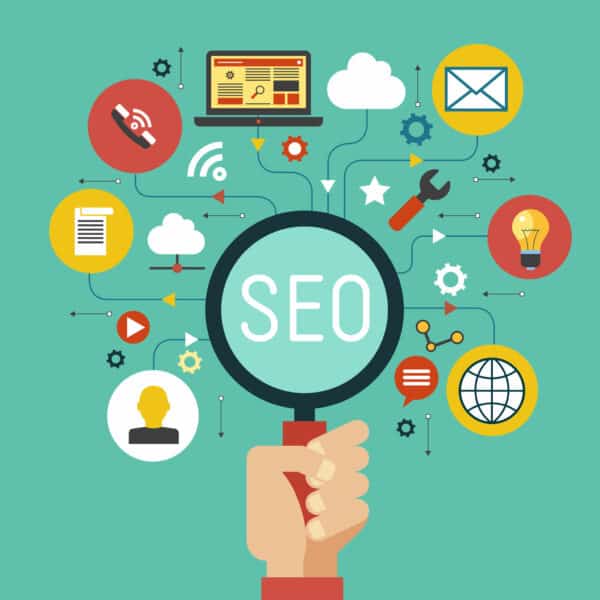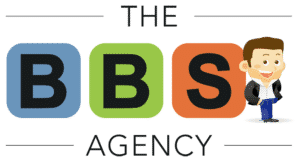How Different Marketing Channels And SEO Work Together


By The BBS Agency
March 9, 2022
While SEO and marketing are two different things, understanding how other marketing channels support your site’s SEO and vice versa can help optimize your marketing efforts and enhance your brand’s user experience, which will lead to better results for your company overall. Search Engine Advertising can help you show up on search results faster (with short-lived results) while you wait for your SEO efforts to kick in. It also gives you an idea of which keywords may or may not be worth targeting in the long run. Social media marketing can help you understand your target audience and user intent better. Improving your user experience helps establish authority on search engines. If you have any questions about your marketing or SEO strategy or want us to handle it for you, reach out to us at Prebuilt Sites or The BBS Agency. We’d love to help you out!
The author’s views are entirely his or her own (excluding the unlikely event of hypnosis) and may not always reflect the views of Moz.
Because of its broad field, SEO has many touch points with a variety of different marketing channels. As other channels’ operations influence SEO, both directly and indirectly, it’s essential to deploy an integrated marketing approach in which each channel supports the other, in order to optimize marketing efforts and enhance your brand’s user experience.
This article provides you with a number of different actionable tips for combining SEO with the marketing channels listed below, that will not only save you time, resources, and money, but will lead to even better results for your team and company:
Search Engine Advertising (SEA)
Both SEO and Search Engine Advertising (SEA) are keyword-driven processes that focus on ensuring a website reaches the top positions of the search engine results page (SERP).
While SEO is a slower process that focuses on organic positions with long-term results, SEA is a much faster approach that focuses on the position of ads with short-lived results.
Although SEO and SEA might seem like adversarial approaches, they actually complement each other — by sharing data, knowledge, and insights, both can be leveraged to achieve better performances.
Here are a few of the different ways that SEA and SEO can work in symbiosis:
Achieve SERP domination
SERP domination means achieving a prominent position on the SERPs for both paid and unpaid results. Maximizing SERP “real estate” increases a sites’ visibility, credibility, and chances of getting clicks from searchers.
For some competitive terms, ranking in position one organically is insufficient to be visible above the fold, as the number of paid ads and SERP features pushes the organic results down. Both site awareness and confidence from potential visitors increase when a website is visible organically as well as through paid ads, which will result in the site showing up multiple times on the SERP.

Use SEA to predict SEO
While SEO is a fundamental channel with tremendous potential ROI, it is a long-term and continuous process that requires initial resources and the passage of time before it begins to show results.

As SEA campaigns provide immediate results, they can help to make sure your SEO strategies are worthwhile by testing their initial priorities. Information like the conversion rate and potential of different keywords and pages in paid campaigns can help determine whether or not they should be optimized for long-term SEO strategies.
Optimize metadata
PPC campaigns provide precise results not only in terms of conversions, but also with regards to click-through rates (CTR), bounce rates, and time on site for different sessions. It allows for the assessment of the searchers’ intent with regards to keywords and landing pages.
The data from A/B testing done by the SEA team can be used to enhance metadata for SEO. For example, using the copy from the best-performing ads to optimize page titles and meta descriptions can help improve organic CTR.
This strategy works the other way around, too: high-performing SEO snippets can be a source of inspiration for SEA ad copy.

Improve Quality Score
Optimizing Google Quality Score is crucial for an effective SEA strategy, as it determines the performance and cost of PPC campaigns.

One decisive Quality Score factor is the landing page’s relevance and quality.
As SEO is all about providing the best experience to users, SEA can benefit from the help of SEO to make sure their ads direct users to highly relevant and optimized landing pages.
Optimize bidding strategy and budget management
SEO and SEA go hand-in-hand when aiming for an optimal and dynamic bidding strategy.
When organic rankings for certain keywords generate a relatively high number of conversions (without necessarily ranking in top positions), it would be wise to start advertising for these queries in PPC campaigns and/or increase their allocated budget.
Also, if you observe specific keywords generating high conversions through PPC campaigns, it would be a good idea to begin optimizing for them in your broader SEO strategy, in order to obtain better organic positions.
In the long-term, this also provides the opportunity to reduce the SEA budget for (expensive) keywords when they are already performing well in organic search, especially if the ad budget is limited.
Use SEA as a backup strategy
SEO isn’t an exact science, and many variables influence organic rankings.
Results might take longer than initially expected, or rankings can decrease significantly in a short period of time. PPC can be used as a short-term solution to maintain a site’s presence and generate traffic from the SERPs.
Affiliate Marketing
Affiliate Marketing and SEO both rely on links.
From the SEO side, backlinks contribute to a website’s authority in the eyes of the search engines, and are one of the most important ranking factors. The higher the authority, the higher the likelihood of ranking.
From the affiliate side, links are sales streams to generate conversions.
Finding the right partners to drive relevant traffic to a website that converts is the main goal. Unlike organic links, search engines do not see affiliate links as “votes” due to the obvious commercial relation with tracking parameters applied.
Both Affiliate Marketing and SEO need to build up a strong network of publishers to promote and enhance their content. There are three ways in which both channels can inspire each other:
Streamline partner research
SEO uses a variety of strategies to find relevant domains to obtain backlinks. For example, looking at competitors’ referring domains and top-ranking domains for specific topics is the specialty of an off-page SEO.
Affiliate Marketing and SEO can sometimes target the same domains without being aware of it. Inefficient outreach due to channels not communicating internally costs unnecessary time and looks unprofessional.
Therefore, united research and sharing the list of potential affiliate and SEO partners can be beneficial before starting a campaign.
Combine partner acquisition
Streamlining outreach between different departments not only saves precious time, but can also save a significant amount of budget.
When a particular website is potentially valuable for both channels, it is favorable to negotiate a cooperation with its webmaster for the two channels simultaneously.
By killing two birds with one stone, it’s possible to negotiate the best overall deal and conditions.
Seize content inspiration
Editorial affiliate links are placed in relevant context within a page copy. Whenever a referral partner generates many leads, it indicates that their content is trusted and appreciated by its readers.
SEO can use this as a source of inspiration for its own content creation strategy.
PR
The role of Public Relations (PR) is to create brand awareness and strengthen brand image and authority.
SEO’s role is to increase a website’s overall authority to acquire more organic traffic.
As both PR and SEO need to reach out to authoritative and relevant websites, they can help each other in the following ways:
Identify target audience and trending topics
PR aims to spread the message of a company, and communicate that message in the best possible way. Leveraging SEO for PR helps to detect who the target audience is and what their interests are in order to improve awareness and visibility.
A way to enhance this message is to associate it with currently trending affairs. SEO can provide great insights into search volume for specific keywords throughout the calendar year, and topics presently trending using Google Trend data.

Utilize press releases for SEO
Press releases do not directly provide ranking benefits for SEO if the publication is clearly marked as such; as John Mueller of Google stated, the best practice for links in press releases is to put them in “Nofollow” according to Google’s guidelines.
In addition, Google ignores most links within press releases.
Nevertheless, press releases might be of interest to publishers who will be willing to write a piece of content about your news and link back naturally to your website, thus providing SEO value.
For this reason, PR should inform SEO when press releases are being sent out, as they could be used by SEO as link baits to obtain organic publications and “Dofollow” backlinks.
Create link baits
Digital PR consists of acquiring qualitative backlinks through the promotion of valuable content.
SEO and PR should cooperate to create linkable assets (infographics, guestographics, studies, interviews, etc.), which are powerful elements to acquire backlinks and increase authority and brand awareness.

Convert unlinked brand mentions into backlinks
Some media platforms happily write about a brand without linking to their website in the publication.
SEOs can easily track these unlinked brand mentions using alerts from various tools in order to gain backlinks.

Reaching out to the authors of articles and asking for a link back to the website will work in most cases, as it is editorially relevant for readers to gain more information about the brand and the product or service that they offer.
Social Media Marketing
Social Media Marketing (SMM) and SEO both need to serve users with engaging content to generate traffic and trigger conversions. They share common goals and can support each other in the following ways:
Get content indexed faster
Sharing new content on social media platforms stimulates pages to get (re)indexed faster as search engines noticing and following the links in the posts will be encouraged to (re)crawl the pages.
Understand user intent
SMM can generate tons of insights about the target audience, as it is often easier for users to share and interact with content on social media than on websites. This type of data allows for the creation of highly relevant landing pages that directly answer searcher intent.
By measuring which content generates the most engagement, how users interact with it, and which questions and/or problems they might encounter using a product or service, SEO can improve the communication and user experience on the website. Plus, social media can provide additional information regarding new trending topics and keywords related to the niche and company.
By using third-party tools, SMM can, for instance, analyze which topics on Twitter are frequently associated with either their brand or their competitors. By sharing this information, SEO can confirm that these themes are also present on the website.

Optimize posts with relevant keywords
As social media platforms use algorithms that utilize keywords when deciding to display content to their users, SMM must optimize their hashtags and keywords in their posts.
SEO can assist SMM by providing the right set of keywords and queries optimized to reach the most relevant and largest possible audience on social media platforms. In addition, social media posts might appear on the SERPs for certain keywords in specific niches.

Promote new content
SMM is an excellent and easy way to promote a website’s new content to its audience. When a new piece of content comes online on the website, it’s important to share on the different active social media accounts. This will encourage traffic and user engagement.
Stimulate link building
Although social links to a website don’t directly influence SEO rankings, actively sharing content on social media is a great way to attract natural and high-quality backlinks to a website. Making influencers aware of a quality piece of highly relevant content might lead to them referencing it on their blog or platform.
Develop joint partnerships
As many website and blog owners are also active on social media, a joint approach between SEO and SMM in acquiring partnerships can save time, effort, and budget for the marketing channels and company as a whole.
Email Marketing
SEO and Email Marketing (EMM) focus on different aspects of marketing, but are both powerful acquisition channels. By sharing their respective data, both channels can highlight potential issues and discover opportunities:
Increase CTR and open rates
By knowing which email subject lines achieve the best open rates, SEO can take inspiration to further optimize page titles and meta descriptions to increase organic CTR.
Vice versa, it can also benefit EMM to copy headlines of landing pages with the highest CTR on the SERPs.
Improve content relevancy
Measuring email click-to-open rates (CTOR) and landing page bounce rates can be very insightful for both channels, to know what keeps users from taking the desired actions.
When adjustments in either lead to improvements in user behavior, the changes can be implemented in the other channel as well.
Recycle content
Newsletter content is not being indexed by search engines. Therefore, successful emails can be recycled, fine-tuned, and turned into blog posts that can be shared across different channels.
Promote content and earn backlinks
Sending out an email to customers and followers is a great way to make them aware of new content on the website that might interest them, leading to more traffic and user engagement.
Linking to blog posts within the emails can increase the chances that people will further link back to it, resulting in an increase in natural backlinks.
UX/UI
SEO + UX = SXO: Search Experience Optimization.
User experience is an essential aspect of SEO. In June 2021, Google released the Page Experience update, which rewards websites for providing an excellent on-site experience to their users.

Communication and cooperation between SEO and User Experience (UX)/User Interface (UI) are both needed, as both can support each other on different elements such as:
Build information architecture
Logical site architecture is fundamental in order to allow search engines to crawl, index, and rank a website appropriately. From the user perspective, a good website structure allows one to easily navigate a website and get a clear understanding of it.
(Photo: Moz Blog)
The deeper a page is buried in the site architecture, the harder it will be for it to rank, as it takes more effort for search engine crawlers and users to reach it.
Because navigational links are given more weight, only important and useful pages should be kept in the navigation.
Ensure mobile-friendliness
SEO and UX should ensure that a website is mobile-friendly.
Mobile-friendliness has been a ranking factor since 2015 and is becoming even more important with the Page Experience update.
Responsive design, text size, and tap targets size are examples of elements Google considers when evaluating if a site is mobile-friendly.

Improve page speed
Speed is decisive for user experience and rankings, especially when optimizing for Core Web Vitals.
Some website design elements can be implemented on the website without consideration of their impact on website performance, and SEO has to monitor the effects that changes made by developers and designers have on the speed of a page.
Manage pop-ups and ads
While pop-ups and ads are an excellent way to catch and/or retain users, they can have a negative impact on your rankings.
In January 2017, Google released an update stating that intrusive ads are now a negative ranking factor. As such, it has to be guaranteed that interstitial ads are being used with a lot of care so that they don’t interfere with an optimal user experience.

Content
Writing content that no one reads is the tragic reality companies that don’t invest in SEO are facing.
The role of SEO is to make sure that the writers produce content that people are actually looking for. Although content is part of SEO work in many companies, both channels still work independently from each other.
There are several elements to consider where SEO can guide content creation to serve quality content, optimized for both visitors and search engines:
Provide content relevance
Qualitative and keyword-rich content, which answers and satisfies searchers’ intent, will drive user engagement and enhance visibility on the SERPs.
SEOs can help content writers to make sure that the topics they write about are actually sought-after and relevant for a company’s potential clients and customers.
Content format, structure, length, and freshness have to be defined with users’ expectations in mind.
Ensure uniqueness
Each piece of content must be unique. Duplicate content, whether internal or external, can prevent pages from appearing in the search results.
SEO can ensure that every page has unique content, especially above the fold, to prevent duplicate content issues.
Enhance E-A-T
E-A-T (Expertise, Authoritativeness, Trustworthiness) is a concept used by Google Quality raters to assess web pages’ quality.
It is essential to display information about the author(s) of the content on a website, especially for Your Money or Your Life (YMYL) websites.
A piece of content is considered qualitative and is valued by users when its author has experience (in either an academic or professional capacity) in the field he or she is writing about. SEO can assist content creators in optimizing for E.AT. on the website.
Conclusion
SEO is a fundamental and powerful channel for increasing a website’s presence and value. As we’ve seen from the above examples, there’s massive potential for achieving dramatically better results when SEO is used in conjunction with other marketing channels. Whether this is SEA, Affiliate, EMM, or any of the other discussed examples, SEO can be integrated in order to achieve optimal results and greater conversions.
Originally posted on Moz Blog.
